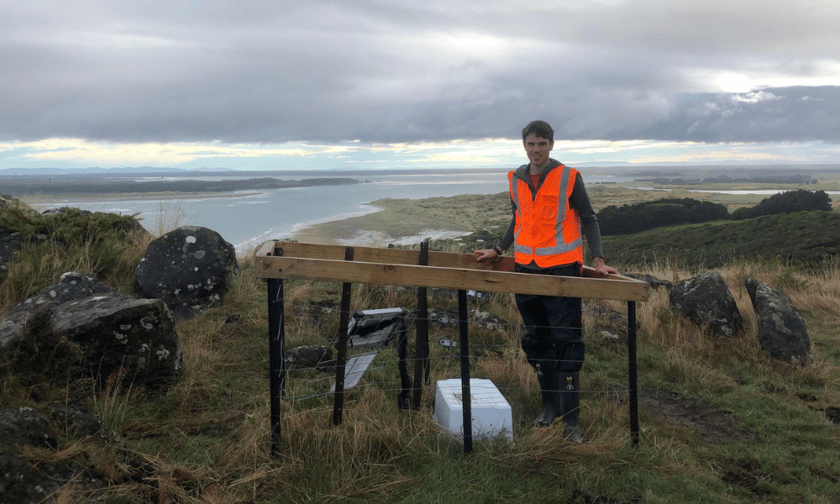

A research team from the University of Otago has discovered earthquakes occurring at depths of up to 40 kilometres under Southland, uncovering previously hidden faults in a part of New Zealand not traditionally associated with seismic activity.
Dr Jack Williams (pictured), the study’s lead researcher, emphasised the importance of the findings.
“Southland is a gap in our understanding of New Zealand’s faults, but that doesn’t mean they aren’t there and can’t cause damage,” said Williams, whose research is supported by the Natural Hazards Commission (NHC) Toka Tū Ake.
To improve understanding of seismic activity in Southland, Williams and his team collaborated with GNS Science to install 19 temporary seismometers. These instruments, deployed alongside GeoNet’s limited permanent network in the region, collected data over 12 months.
The closer spacing of the seismometers enabled the researchers to pinpoint the locations of earthquakes with greater accuracy.
“What was really striking was the depth of the earthquakes we recorded,” Williams said.
Typically, earthquakes occur in the upper 15 to 20 kilometres of the Earth’s crust, where cooler temperatures make the material brittle. However, the study found that seismic activity in Southland extends to nearly twice that depth, where the crust is usually warmer and more ductile.
According to Williams, the unique mineral composition of Southland’s lower crust, which includes iron-rich materials, allows it to remain strong and brittle despite the heat.
Using the enhanced network, the researchers detected 85 earthquakes during the year-long study, a sixfold increase over the number recorded by GeoNet’s permanent equipment.
Although most of these quakes were minor and not felt at the surface, Williams explained that they provide valuable clues about potential locations of larger seismic events.
“Most of these shakes were too small to feel but they give us hints about where larger earthquakes may occur in the future,” he said.
The team is also analysing Environment Southland’s high-resolution ground surface maps for evidence of ancient earthquakes.
Surface ruptures visible in these maps may help identify the locations of fault lines, offering further insights into the region’s seismic history.
The study forms part of a larger research initiative led by Professor Mark Stirling, chair of Earthquake Science, aimed at improving knowledge of earthquake hazards in less active regions of New Zealand. The program is funded by the NHC, which is also investigating seismic risks in Otago and Auckland.
Dr Natalie Balfour, NHC’s head of research, said the findings highlight the importance of preparing for earthquakes in all parts of New Zealand.
“This research is part of our wider effort to better understand earthquake risk in traditionally low seismic regions,” she said.
She urged residents to take steps to safeguard their homes and families, pointing to resources on the NHC’s website.
“It’s a good reminder that earthquakes can happen anywhere, and without warning. Remember to ‘drop, cover, hold’ if you feel an earthquake, and think ‘long, strong, get gone’ if you’re in a tsunami zone. There is always something you can do to prepare your home and protect your whanau. We have quick and easy tips on our website for making your home safer for future shakes,” Balfour said.
